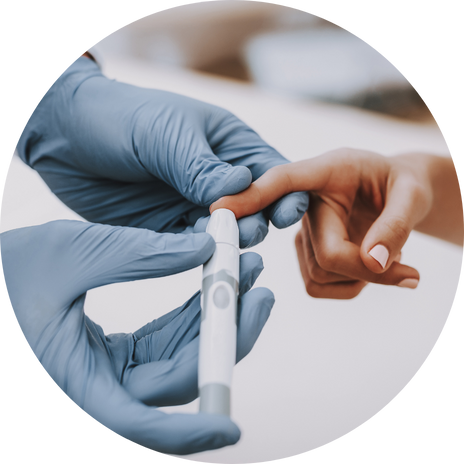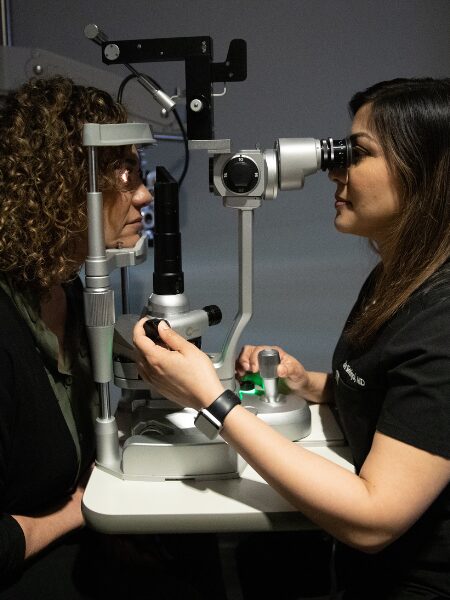Search
Search
Diabetic retinopathy is a complication of diabetes that affects the eye that can cause vision loss and blindness. Diabetic retinopathy affects the blood vessels in the retina, the thin layer at the back inside of the eye that receives light, encodes it, and transmits it to the brain. Early stages of the condition do not always present symptoms so early detection is key to protecting your vision. If you have diabetes, an annual comprehensive eye exam at least once a year is crucial in identifying potential early signs of diabetic retinopathy.

Diabetes of any type (type 1, type 2, or gestational) can put you at risk for diabetic retinopathy. If you have been diagnosed with diabetes, we encourage you to schedule an appointment with Kleiman Evangelista’s specialists to jump start your diabetic eye care.

Between 80 to 85 percent of patients with diabetes will develop some degree of retinopathy during their lifetime.
Typically diabetic retinopathy does not present symptoms in the early stages of the disease. However, some patients have reported noticing early changes in their vision like difficulty reading or distance vision. In later stages of diabetic retinopathy, this can lead to conditions like:
Diabetic Macular Edema
This is when the blood vessels in the retina begin to bleed into the gel-like fluid that fills the eye. That can cause floating dark spots that look similar to cobwebs. Sometimes these can clear up on their own but it is still important to seek treatment right away because if they are left untreated, they can cause scars to form in the back of the eye.
Proliferative Diabetic Retinopathy
Proliferative diabetic retinopathy (PDR) is an advanced stage of diabetic retinopathy, a diabetic eye disease. It occurs when diabetes damages the blood vessels in the retina, leading to their closure. In response, the retina starts growing new blood vessels. However, these new vessels are fragile and can bleed easily, potentially leading to serious vision problems.
Diabetic retinopathy isn’t curable, but it can be managed. Treating diabetic retinopathy focuses on slowing its progression and preserving vision. Key steps include:
Remember, consistent follow-up with healthcare providers is vital for effective management and adapting treatment as needed.
Kleiman Evangelista Eye Centers of Texas has the latest diagnostic equipment and provides a comprehensive approach to the diagnosis and treatment of diabetic retinopathy. Regular eye exams with your doctor, managing your diabetes, and timely treatment can significantly reduce the risk of vision loss and blindness.

